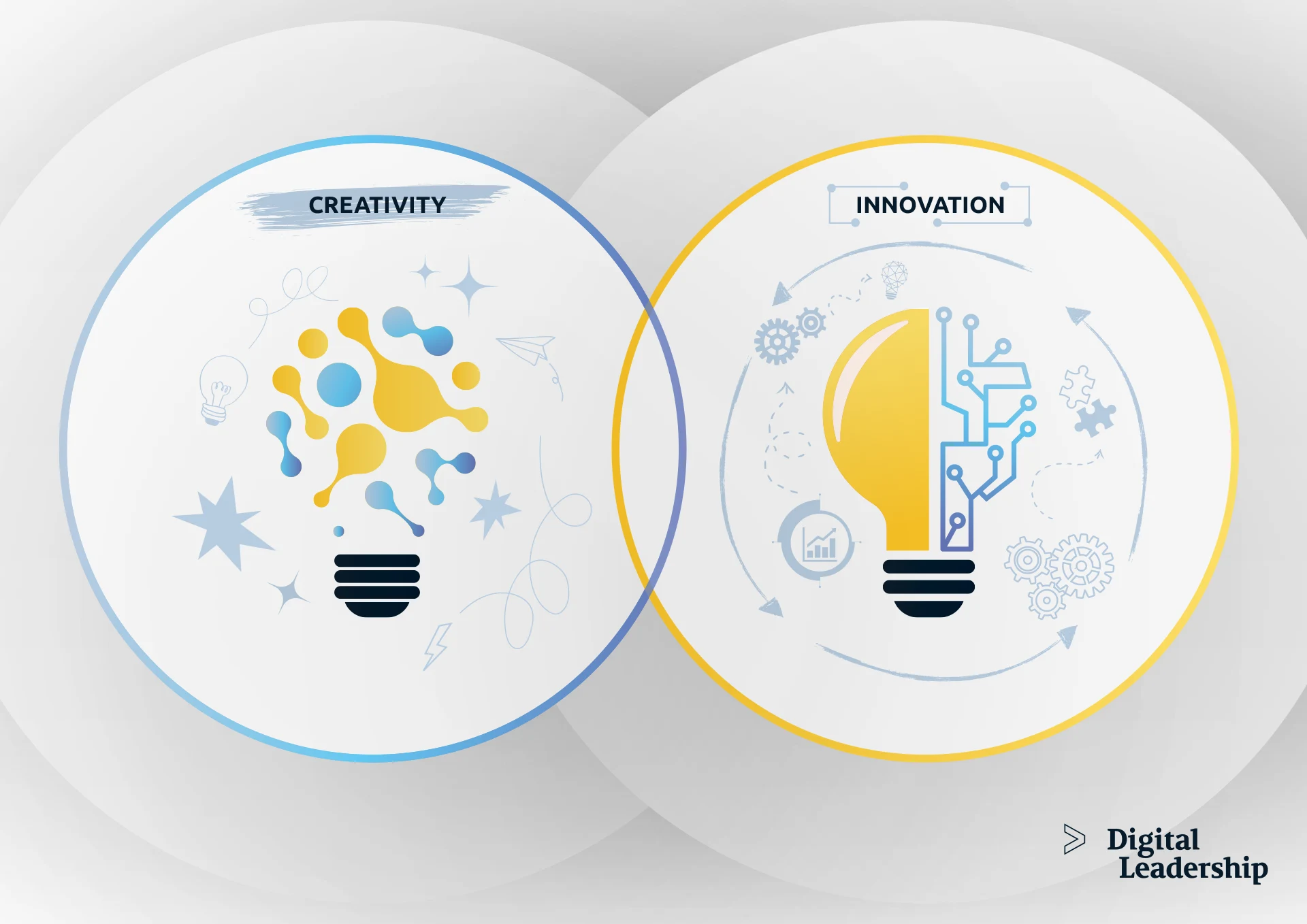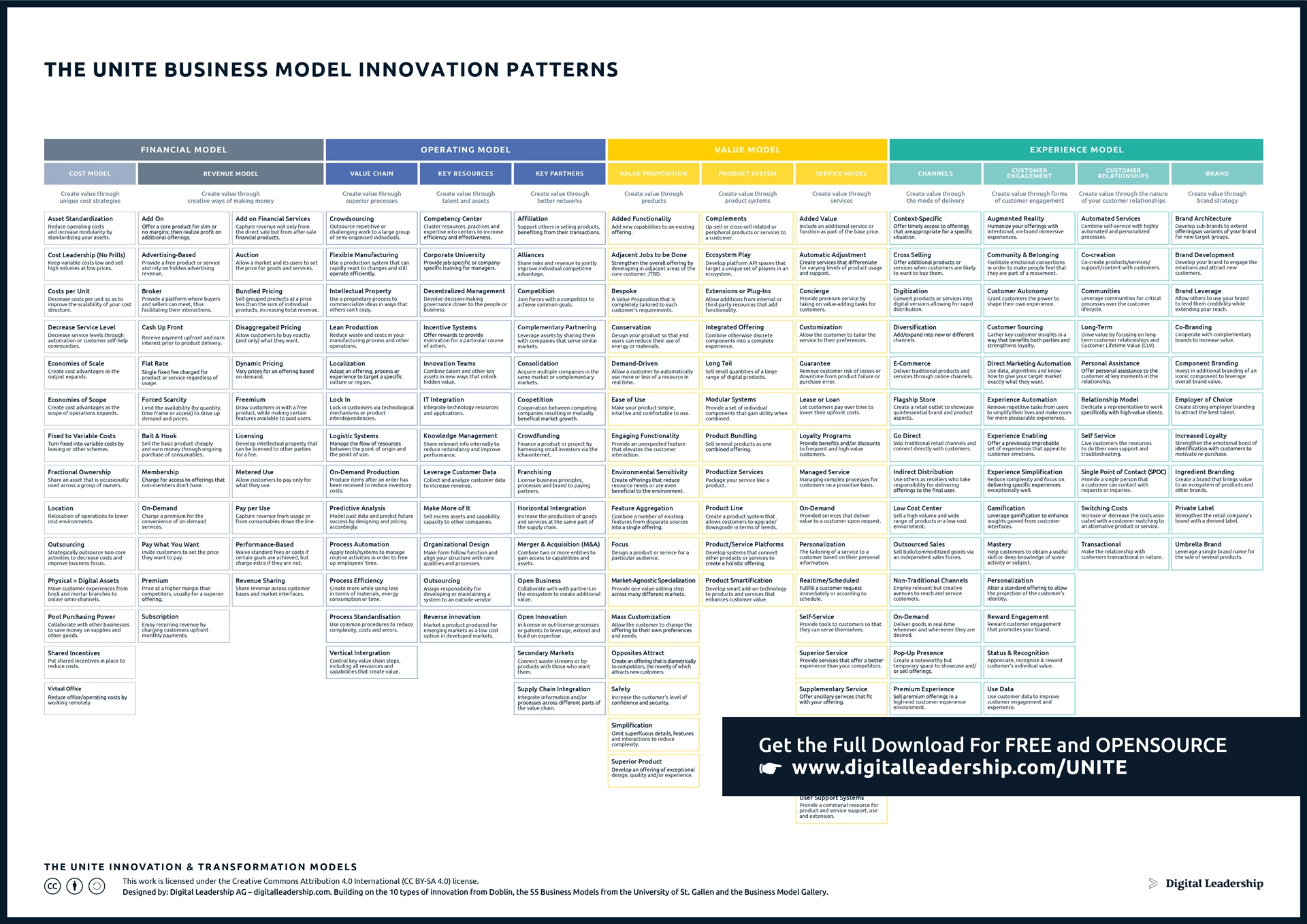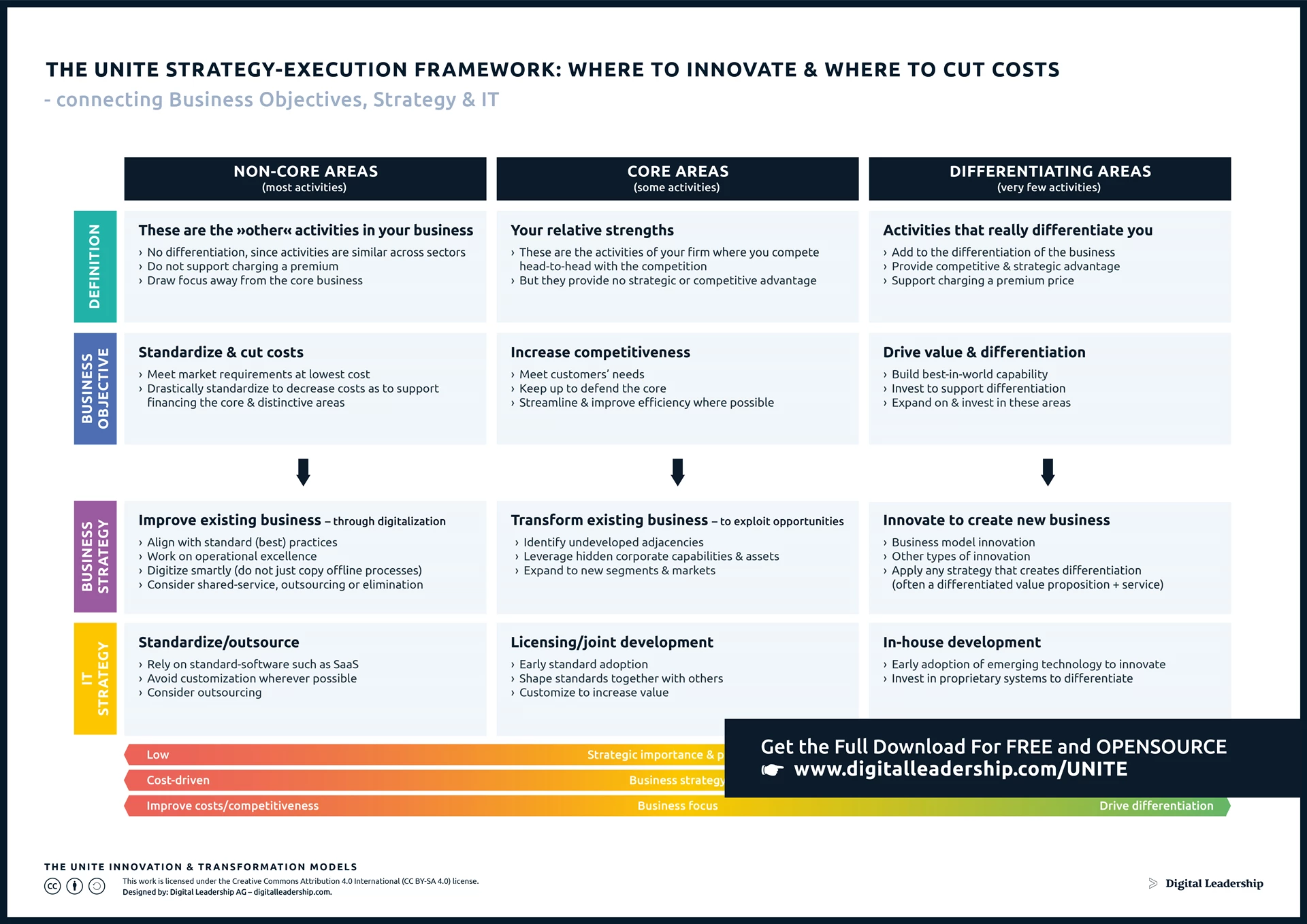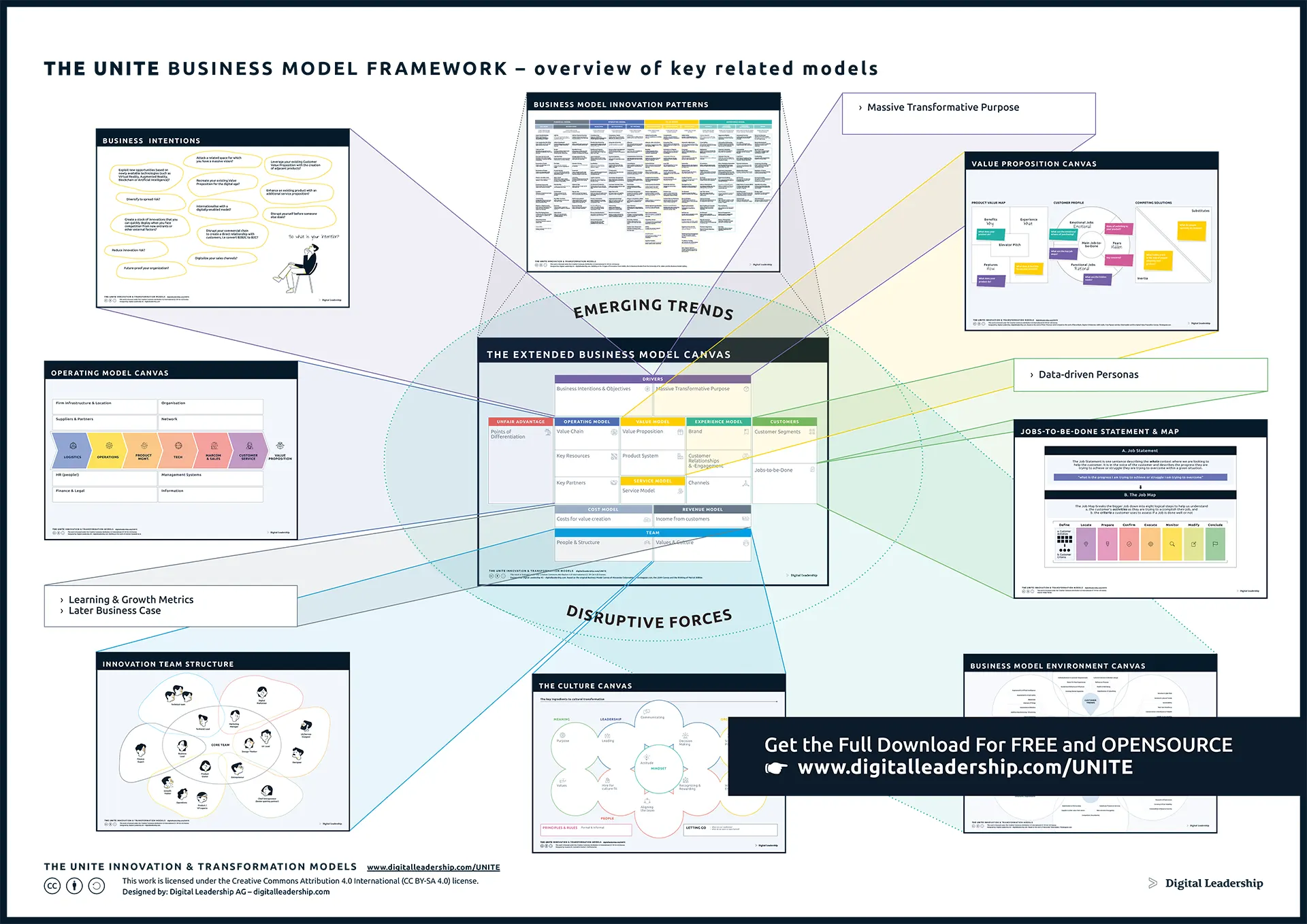Creativity and Innovation: Differences, Examples & Definitions
Published: 04 October, 2022
Innovation

Table of Contents
Innovation teams are a community of autonomous individuals with the ability to integrate and promote different mindsets and leverage their potential in order to reach a common goal. They have a high degree of self-leadership; people are seen in their wholeness, and structures are flexibly and autonomously adapted accordingly. This focus on connected but autonomous meaning-making is what provides the space for true co-creativity and innovation.
Our latest book, How to Create Innovation, is loaded with checklists and canvases that you can use immediately to broaden your organization’s reach and inspire creativity and innovation. It’s the first end-to-end guide for propelling companies forward through business model development. It’s available now!
What is the difference between Creativity and Innovation?
| Creativity | Innovation |
| Inspiration | Execution |
| Cognitive | Tangible |
| Potential | Practical |
| Unique and individual | Repeatable and scalable |
The distinctions between creativity and innovation are important for anyone looking to inspire in their company. Understanding the nuanced difference between creativity and innovation will help managers devise a plan that makes room for both. We have some simple definitions we rely on to make the distinction clear.
Creativity is a thought process that, in the best case, leads to an extraordinary and unique idea. Creativity is a cognitive exercise, similar to inspiration. The light bulb moment of realization. Creativity usually includes a motivating push to bring something to the real world, but we believe the incident of creativity ends right at the point in which the thing is being made.
Related: Innovative Thinking: Skills, Definitions & Strategies
Innovation is the process by which this inspiration for a new product or service becomes actually tangible. It happens in the real world. Innovation is a method, a device, a system that is enacted. While it doesn’t have to be one particular thing, it has to be real. For example, a new factory machine that uses less energy is clearly innovation, but so is a more streamlined pathway for company communication.
What is Innovation?
Of Innovation, author and educator Peter Drucker said,
“Innovation is the specific function of entrepreneurship, whether in an existing business, a public service institution, or a new venture started by a lone individual in the family kitchen. It is the means by which the entrepreneur either creates new wealth-producing resources or endows existing resources with enhanced potential for creating wealth.”
Peter Drucker
Through Innovation, we bring ideas into the world so they can make a tangible impact. The end result of true Innovation is something that can be marketed as a product or service.
Types of Innovation
- Incremental Innovation: Adding features or capabilities to an existing product one at a time
- Architectural Innovation: Applying existing technology or expertise to a new market.
- Disruptive Innovation: Applying new technologies, processes, or business models to existing industries.
- Radical Innovation: The rarest of all innovation types, entirely new technologies or products are created for entirely new markets.

How to Create Innovation is the new book from the people behind Digital Leadership. In it, you’ll find practical guidance for directing your company’s innovation and transformation efforts. Written by experts in the field of business model transformation, the book is full of useful canvases and checklists that you can put to work for you on day one.
What is Creativity?
Artists, philosophers, educators, and psychologists have long tried to write a simple definition of creativity. Its very nature is elusive, which makes describing it a challenge. We know it’s the process through which something new is formed, and typically, most definitions assume value is included with the new creation.
We agree that there are four different types of Creativity, each a different blend of specific attributes and approaches.
Types of Creativity
- Deliberate and Cognitive: The Creativity of planning and expertise. Creativity with a purpose.
- Deliberate And Emotional: Where logic meets emotion. The Creativity of both an open mind and an open heart.
- Spontaneous and Cognitive: Knowledge relies on inspiration for a “Eureka!” moment. The Creativity of preparation and perfect timing.
- Spontaneous And Emotional: The Creativity of the Unconscious. Ideas arrive when we least expect them, so we have to be ready.
What is Invention?
Most business consultants agree that Invention is the act of creating something new. In a business context, Invention has nothing to do with marketing, sales, or the continued success of a company.
Related: Innovation vs Invention: Definition, Difference & Importance
The invention is an unchecked, unpurposed creation. Innovation takes Invention and turns it into a commodity.
Importance of Creativity and Innovation
Creativity and Innovation are important to your business because they ensure that your customers are having their needs met and your company has a secure future. Because they are both necessary for the long-term health of both your business and your customers’ community, decision-makers must make deliberate choices that support both processes.
Creativity and Innovation in Business
During Creativity, we seek to find new ways of combining patterns, constructing new ones, and solving problems in ways that have never been tried before. During Innovation, we take the fruits of Creativity and find ways to bring them to the market profitably.

Designed by: Digital Leadership AG – Building on the 10 types of innovation from Doblin, the SS Business Models from the University of St.Gallen, and the Business Model Gallery
Working with Business Models Patterns will allow you to develop new combinations in a structured manner. First, the process will help you to break with your dominant industry logic. Then, you can adapt the pattern to your company’s specific context and so create an innovative variant. Your own ideas and creativity are as essential at this point as challenging your Business Model against other patterns.
Related: Business Model Innovation – How to Innovate Your Business Model?
Critics of this approach may then ask, but where does the beauty and creativity of innovation lie? Isn’t this simply producing copies? The innovation lies in the understanding, translation, recombination and transfer of successful patterns to your own industry and challenges. You may end up with the same result without using a system such as the one we present, but then you are leaving a lot up to luck.
How Do Creativity and Innovation Drive Digital Transformation?
Contrary to popular opinion, digital transformation is not just about technology. It’s more about your business strategy, data, process, creativity, innovation, and people. Digital transformation does not occur overnight; it takes consistency in building strategic roadmaps. You can start slowly by transforming the critical areas of your business to achieve your desired outcome. No doubt, in this digital era, the only way for your business to thrive is to embrace digital transformation for enhanced business creativity and innovation.

Designed By: Digital Leadership AG
Closing Thoughts
The nuanced differences between Innovation, Invention, and Creativity may seem unimportant, but for those companies looking to fully capture their potential for transformation and exponential growth, the definitions and examples we’ve provided here should help clarify whatever confusion there might be.
We wish you all the best in your continued efforts to bring your organization forward.
The UNITE Business Model Framework: A Framework for Innovation Success

Designed By: Digital Leadership AG
































 Book How to Create Innovation
Book How to Create Innovation